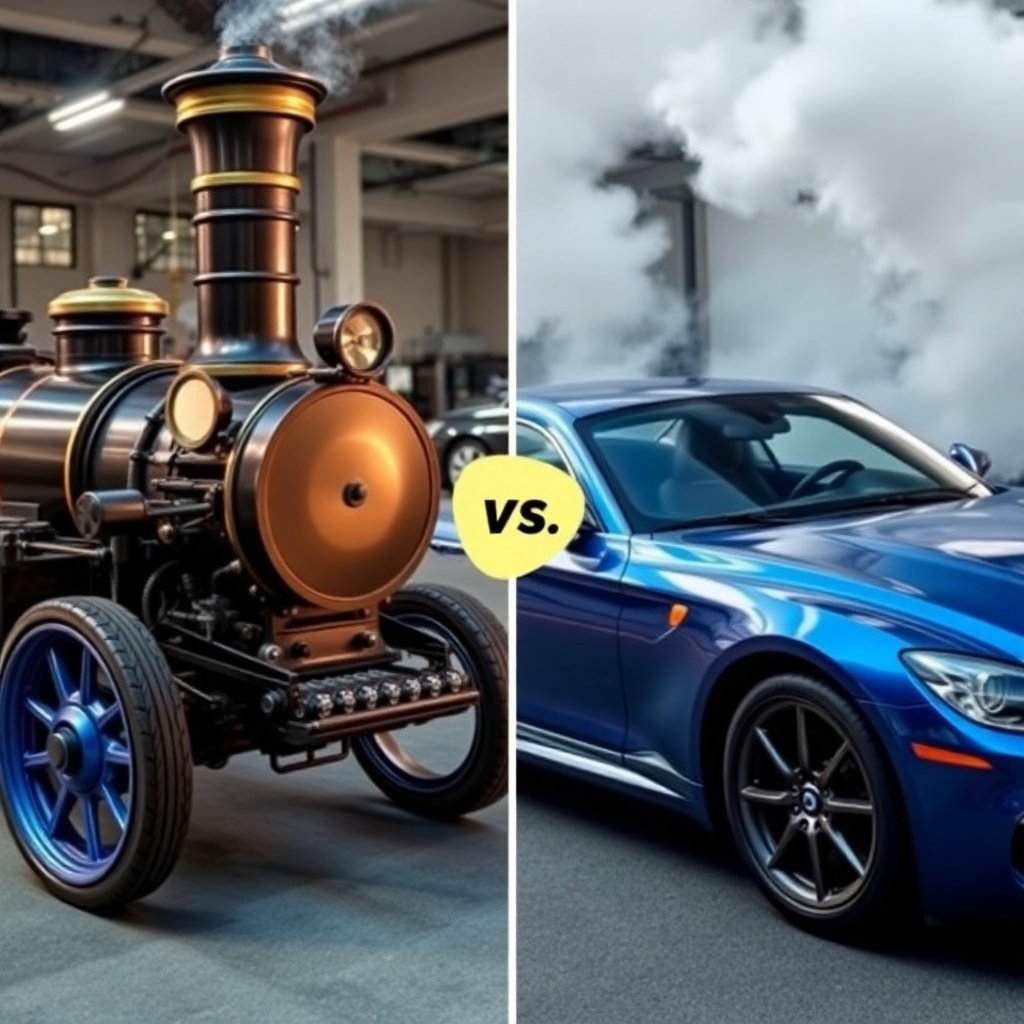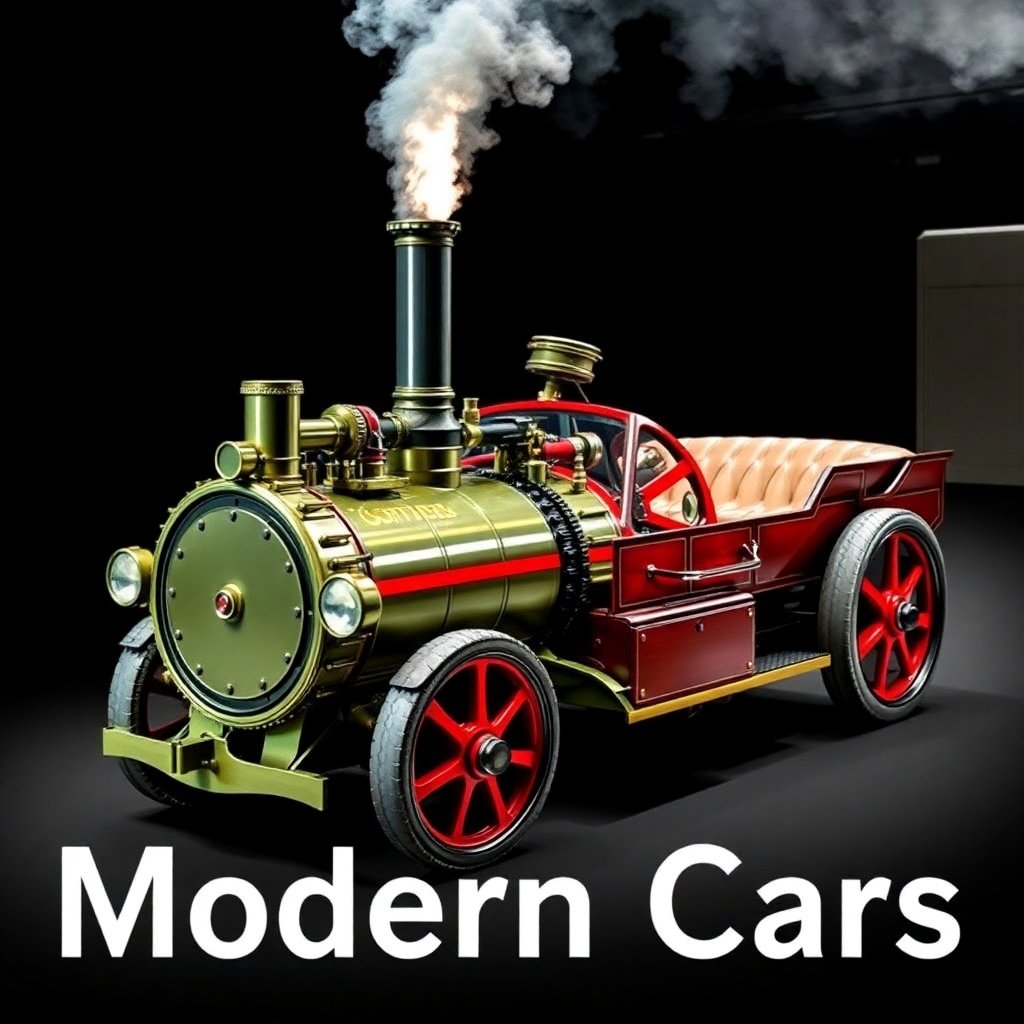Steam Engines vs. Modern Cars: Exploring Intellectual and Premium Technologies

The evolution of transportation technologies has been nothing short of revolutionary. From the early days of steam engine interllctual inventions to the sleek, automated systems in modern cars today, each era brought groundbreaking advancements. This progress embodies human ingenuity, showcasing the relentless pursuit of efficiency, convenience, and innovation. But in comparing the two—steam engines and modern cars—one can explore whether steam engine interllctual technology, and how they stack up against the intellectual and premium technologies of today.
This article breaks down the comparison into five categories for better understanding and clarity. These include historical significance, mechanisms and innovation, applications, sustainability, and future outlook.
1. A Glance at Historical Significance
Steam engine, widely regarded as one of the greatest inventions of human beings, started the Industrial Revolution. Known as steam engines, the primitive form was worked out by Thomas Newcomen; James Watt later put his improvements and made them efficient for steam engines for trains, ships or factories etc. Their knowledge base rested on the mantle of a symbiotic relationship with steam—a remarkable feat during that period. The question remains, are steam engine interllctual technology? Absolutely! Not only did their creation and usage impact the mechanical engineering arena, they also paved the way for countless more systems.
This is however sleepy if compared to the modern cars which began during latter part of the nineteenth century. Karl Benz came up with the three-wheeled invention before the path that we now define automobiles. The latest ten years just brought enhancements, be it the assembly line innovation by Henry Ford or self driving electric automobiles today. Automobiles transformed ways people could transport themselves from one place to another affordably, comfortably and at the individual’s pace. Wheras steam engines dominated industries, vehicles changed the Weald of personal transport.
2. Comparing Mechanisms and Innovation
When exploring interllctual technology, it’s important to assess how systems operate technically. Steam engines took heated water, creating steam to propel tappets linked up with devices for motion. They used coal or wood as fuel—and what could be more compellingly intellectual in its simplicity?
Modern cars, on the other hand, encompass several types of propulsion systems:
- Combustion Engine Vehicles: Fueled by gasoline or diesel, these cars rely on an intricate combustion process to generate energy.
- Electric Vehicles (EVs): These involve an intellectually advanced battery system for storing and utilizing electric power.
- Hybrid Cars: They combine electric motors with combustion engines, blending efficiency with sustainability.
The main distinction in this case is between the range, on one hand, and the accuracy, on the other. As intellectually sustainable as the steam engines may have been, they were relatively large and massive at that. It entailed intensive maintenance and people power. Myriad retractable roofs available in today’s vehicles powered by computer chips and intelligent software define the epitome of interllctual technology advancing the combination of reliability with the ease of operation.
3. Wide-Ranging Applications
Steam engines were used as power in different areas of manufacture. Ships which formed the major base of shipment were powered by these engines for increased speed and strength. Riverboats and ships incorporated the principle of steam technology which facilitated cross continental business during the industrial period. Steam-serving factories opened and extended the rate at which goods were produced.
Present complex cars do impact every sector of the economy but have a consumer orientation as its key strength. They are widespread in cities themselves where taxis and ride-sharing vehicles reign, trucks control the flow of goods, and buses offer city mobility solutions. GPS, AI optimization in self driving algorithms, hybrid fuel systems are symbolic of steam engine intellectual innovation, where an innovation that is 200 years old has been re-purposed to personalize for personal use.
4. Sustainability and Environmental Considerations
Addressing sustainability raises the question of whether steam engine interllctual technology aligns with today’s environmental concerns. Steam engines were heavily dependent on coal and wood, substances that contributed significantly to pollution. At the time of their dominance, environmental awareness was rudimentary, leading to the prolonged use of unsustainable practices.
Modern cars reflect the growing importance of sustainability. Electric vehicles (EVs), powered by clean energy sources like solar or wind, drastically reduce carbon emissions. Even internal combustion models are seeing leaps in efficiency through turbocharging and engine downsizing.
However, it’s worth noting that EV production, particularly battery manufacturing, poses environmental challenges. Recycling and reusing these materials represent the next frontier in intellectual technology.
5. A Future Outlook
Examining the tracks of obsolescent and new technologies is quite interesting. Looking at the present linear economy, those who utilized steam engines no longer require it, but its intellectual value has not disappeared. Modern power plants even have turbines within their system; turbines, which are in fact sophisticated variants of a steam engine. Their efficacy remains useful to humanity in less conspicuous but significant thank you.
On the other hand, cars get equipped with more and more innovations of the future. Newly released self-driving systems, advanced artificial intelligence interfaces, and Internet connections make car manufacturers represent high-tech industries. For instance, today’s car makers such as Tesla and Waymo are redesigning cars as “computers on wheels” and exhibiting opulent, environmentally friendly cars.Can modern cars be more an example of intellectual technology than steam engines? This is not well-defined because it depends on one’s perception of intellect. From its development, steam made people aware of the intricacies of operating formidable machinery; modern automobiles symbolize sophistication, integration and individualization.

Intellectual Parallels Between Old and New
Examining the tracks of obsolescent and new technologies is quite interesting. Looking at the present linear economy, those who utilized steam engines no longer require it, but its intellectual value has not disappeared. Modern power plants even have turbines within their system; turbines, which are in fact sophisticated variants of a steam engine. Their efficacy remains useful to humanity in less conspicuous but significant thank you.
On the other hand, cars get equipped with more and more innovations of the future. Newly released self-driving systems, advanced artificial intelligence interfaces, and Internet connections make car manufacturers represent high-tech industries. For instance, today’s car makers such as Tesla and Waymo are redesigning cars as “computers on wheels” and exhibiting opulent, environmentally friendly cars.
Can modern cars be more an example of interllctual technology than steam engines? This is not well-defined because it depends on one’s perception of intellect. From its development, steam made people aware of the intricacies of operating formidable machinery; modern automobiles symbolize sophistication, integration and individualization.
Tech Evolution Across Eras
In comparison to the technological environment, both the steam engine as well as modern vehicles are innovative to the optimum basic. While steam trains and boats were epitome of luxury in the 19th century, luxury cars with autopilot, adaptable suspension and AI integrated cockpits define the luxury of today’s world.
More importantly, it shows that great ideas still grow with society’s necessities. Steam, while being the first, declined after internal combustion took a higher efficiency rating and scaling of utilities. The car, formerly as a distinctly basic coarse iron box on wheels, became symbolizing another era in terms of customization, comfort, and social acceptance.
Can it then be said that a steam engine intellectual formed the basis of automotive evolution? Yes, without question. It began here to imagine an alternative to powered movement and was built as the basis of the transportation vehicles on which society relies today.
Advantages and Trade-offs
Here’s another lens through which these technologies can be compared:
Advantages of Steam Engines
- Simplistic mechanisms with robust power
- Availability in fueling industrial growth
- Inspired fields like metallurgy, robotics, and thermodynamics
- Early democratization of technology during its time
Trade-offs of Steam Engines
- Bulky infrastructure requirements
- Significant environmental consequences from emissions
- Heavy reliance on manual oversight during operations
Advantages of Modern Cars
- Unmatched convenience and speed for personal transportation
- Technologically adaptive with AI, GPS, and EV systems
- Vast diversity in design and application (luxury, economy, electric)
- Enhanced focus on environmental sustainability
Trade-offs of Modern Cars
- Heavy battery exploitation for EVs
- Energy-intensive manufacturing processes
- Risk of software glitches in autonomous systems
Both domains balance intellect with trade-offs. Are steam engine interllctual technology? Absolutely, within a historical lens. Do modern vehicles redefine intellect for today? Without doubt.
Wrapping It Up
When sandwiched together, steam engines and modern cars are truly bests of their own age. Steam ran the show to transform the aperture of industrialization where engineering was noticeable with its keen intellectual contribution that influenced the city and commerce. The modern cars follow a different approach, adding intricate brains to small steel boxes, has a multitude forms and features for multiple tasks to cover various aspects of human existence.
But really, it is not a matter of pitting one against the other, because both have their strengths and weaknesses. It is indeed progress, which advances steadily and without end, that is being cynically hailed. The steam had laid the groundwork for a world that is smarter and quicker than you can imagine. Today’s cars build on that base, creating mobility products that meet the era of connected and sustainable living.
The compatibility between these technologies proves the notion that each generation is a success of the previous one. In this way, humanity turns dreams of faster and efficient modes of transport into realities that make sense. In fact, even the twenty first-century automobiles feature intellectual innovations in steam engines, which perhaps comprise drivetrain, sensors, and lines of code.
With such a continuity, this connection is not one of separation but of growth: we’re told that intellect is eternal even if the technologies are not.






